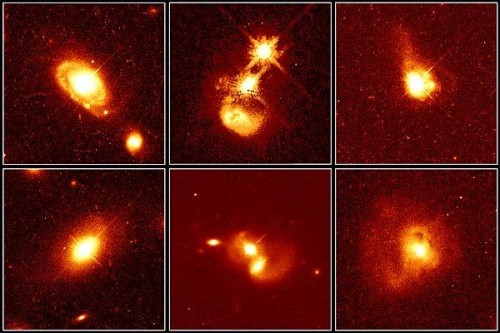It all started as a radio systems engineer from Bell Labs Possible sources of interference to radio systems And discovered a signal source in the center of the Milky Way galaxy! So what does the "radio station" of the universe broadcast? What do radio telescopes allow to discover? And what are quasars?

Written by: Dr. Netzah Farbiash, Young Galileo
When talking about celestial bodies and telescopes, the first thought that comes to most of us is the familiar sight of the impressive planets, sometimes also that of the sun and of nebulae and galaxies that can be seen in a telescope. However, these are the sights that can be seen with the eyes - and even the use of a telescope, which allows receiving more information thanks to the concentration of light, does not break into the realm of visible light.
Since the spectrum of electromagnetic radiation is much wider than the limits of visible light, it is very important to observe the heavenly bodies also by means that utilize additional frequencies. Certain frequencies, such as infrared, ultraviolet, X-rays and others, are filtered by the atmosphere; And this fact allows life to exist on Earth. To observe them, we have to take telescopes and measuring instruments into space. It is interesting to discover that it is precisely long wavelengths in the radio frequency range that can pass through the atmosphere without difficulty. The question is of course what they reveal to us.
Noise from the center of the galaxy
In 1932, Carl Janski, a physicist and radio systems engineer at Bell Laboratories in New Jersey, USA, began to investigate and classify possible sources of interference to radio systems. In his research he discovered a stable background noise from an unknown source. He noticed that the intensity of the noise changes on a daily basis, so he assumed that this signal comes from the sun, as part of its electromagnetic radiation spectrum.
However, when it became clear that the source of the signal was moving slowly away from the sun, Janski realized that the source of the signal was not in the sun, but in the center of the Milky Way galaxy. The sensational discovery was published in professional journals of radio engineering, and astronomers, fascinated by a source of radiation in the radio field from the center of the Milky Way galaxy, wanted to further investigate his discoveries.
But as sometimes happens, especially in times of economic depression, in the absence of resources, research institutions and astronomers were afraid to take a risk in a new field of research. Although Janski was not an astronomer, and although after his discovery he was no longer involved in radio astronomy, he is considered one of the founders of the field, and the unit of measure for the power of a celestial radio source is named after him.
Mysterious radio sources
At the end of World War II, huge amounts of unused military equipment remained around the world. Among other things, many radar systems remain. Instead of throwing them away - creative astronomers turned them into telescopes that pick up electromagnetic radiation in the field of radio frequencies, and since then they have been called radio telescopes. Suddenly a fascinating field in astronomy was reopened. It soon became clear that a large amount of information can be obtained in the radio field, even greater than that which can be obtained in the visible light field. In particular, very strong point sources of radio radiation attracted attention.
The radiation measured was constant and continuous, like the light emitted by the stars. But stars, which are also point sources of radiation, do not usually emit such large amounts of radio radiation. The measurements raised many questions among astronomers, and the name given to the mysterious radio sources was "quasars"; "Quasar" means "quasi-stellar radio source". In the sixties of the twentieth century, additional measurements were conducted, and these showed that quasars emit, in addition to radio radiation, radiation at other frequencies: visible light, X-ray radiation and infrared radiation.
This discovery created additional complexity. Even then they knew that each star has a characteristic frequency, which usually represents the temperature of that star. Therefore the discovery that quasars emit radiation in such a wide range of frequencies was particularly strange.
A supermassive black hole
Another question, no less strange, arose when it was discovered that some of the quasars exhibited variable luminosity: sometimes strong and sometimes weak. These changes occurred in a very short period of time, sometimes minutes, and therefore it was clear that a quasar cannot be large because the information about the change in luminosity from one end of the quasar to the other end cannot travel faster than the speed of light. It took many years to develop a theory that would explain the phenomena that quasars exhibit.
According to the accepted theory - called an "adsorption disk" - a quasar is an extremely massive black hole located in the center of a galaxy, and has a mass at least several million times greater than that of our Sun. The black hole attracts and swallows all the gases in its vicinity, and when they approach it, they arrange themselves in the form of a flat disk and begin to swirl around it. The particles that make up the disk move at a tremendous speed (close to the speed of light) around the black hole, and in the process they collide with each other, and the collisions cause them to emit energy. The calculations manage to explain the unimaginable amounts of energy that quasars emit, which are without a doubt the brightest objects known to us in the universe.
The writer is Vice President of Science at Caruso Science Park
The article was published in the Galileo Young Monthly for curious children. For a gift digital sheet Click

One response
Literally a reproduction of the article from 2009:
https://www.hayadan.org.il/quasars-0111096